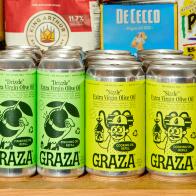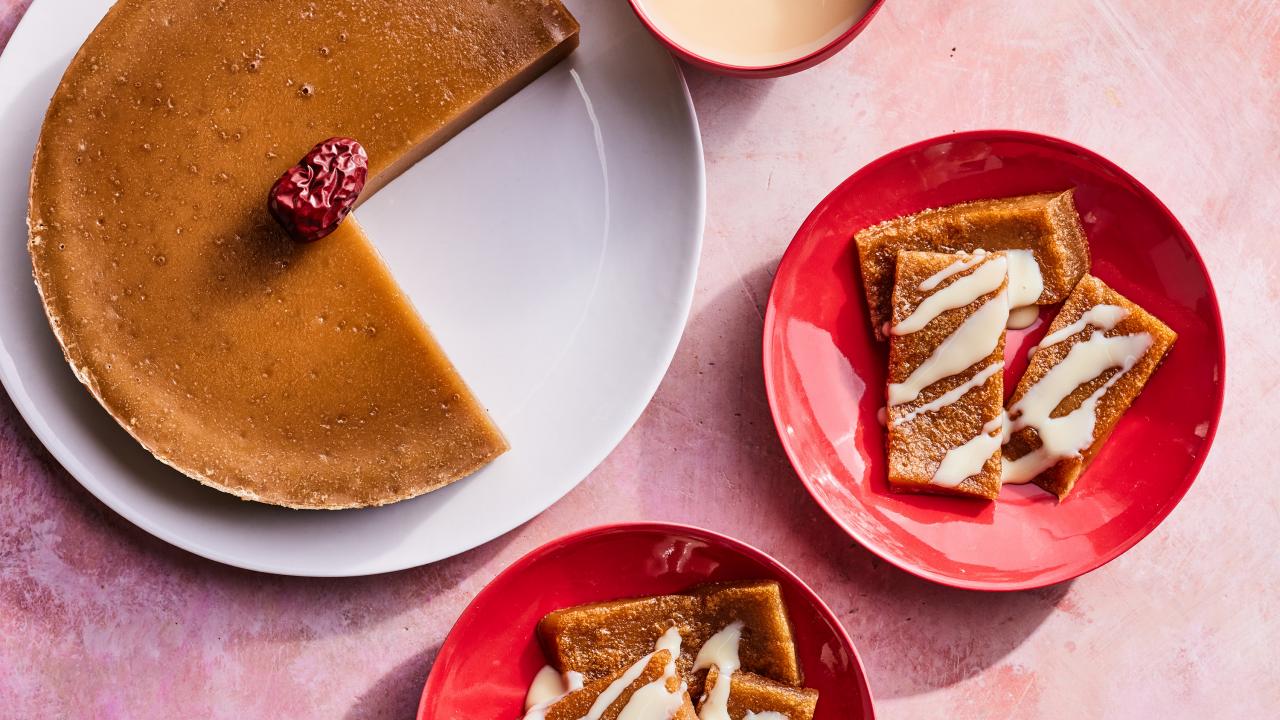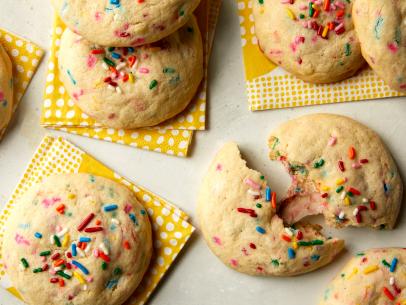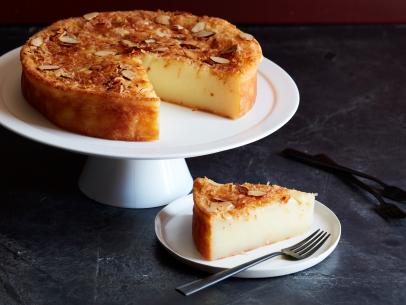Nian Gao
- Level: Easy
- Total: 5 hr (includes chilling time)
- Active: 50 min
- Yield: 4 servings
-
- Nutritional Analysis
- Per Serving
- Serving Size
- 1 of 4 servings
- Calories
- 687
- Total Fat
- 8 g
- Saturated Fat
- 2 g
- Carbohydrates
- 139 g
- Dietary Fiber
- 4 g
- Sugar
- 17 g
- Protein
- 11 g
- Cholesterol
- 6 mg
- Sodium
- 430 mg
- Level: Easy
- Total: 5 hr (includes chilling time)
- Active: 50 min
- Yield: 4 servings
-
- Nutritional Analysis
- Per Serving
- Serving Size
- 1 of 4 servings
- Calories
- 687
- Total Fat
- 8 g
- Saturated Fat
- 2 g
- Carbohydrates
- 139 g
- Dietary Fiber
- 4 g
- Sugar
- 17 g
- Protein
- 11 g
- Cholesterol
- 6 mg
- Sodium
- 430 mg
Ingredients
Directions
Special equipment:
a wok or a bamboo steamer or metal steamer basket- Bring a wok filled with 1 to 2 inches of water to a boil over medium-high heat (the water should be low enough so it doesn't touch the cake pan once it is added). Alternatively, you can use a bamboo steamer or a large saucepan fitted with a steamer basket.
- Bring the brown slab sugar and 2 cups plus 3 tablespoons of cold water to a boil in a medium saucepan over medium heat, stirring occasionally as the slab sugar tends to stick to the bottom of the pot, and cook until the sugar melts. Turn off the heat and stir in 1 tablespoon of the vegetable oil and 1/2 teaspoon salt. Set aside to cool until no longer steaming, about 6 minutes.
- Mix both kinds of rice flours together in a large bowl and set aside.
- Grease an 8-inch round cake pan with the remaining 1 teaspoon vegetable oil. Line the bottom of the pan with a parchment circle and lightly grease the parchment with more vegetable oil. Set aside.
- Gradually add the sugar syrup to the rice flours in three additions, stirring with a rubber spatula until there are only a few small lumps of flour. The mixture will be stiff at the beginning but will loosen after stirring for about 1 minute.
- Strain the batter through a fine-mesh sieve set over another large bowl. Pour the batter into the prepared cake pan and cover with aluminum foil. Place the pan over the steamer and steam over medium heat until the cake is light brown and almost translucent, about 2 hours; refill the steamer after every 10 to 15 minutes as the water evaporates.
- The classic way to check for doneness is by taking a small piece from the center of the cake with a chopstick (or a butter knife) and then placing a dried red date on top of the hole to hide it and provide a kind of decoration. Remove the pan from the steamer and set aside until cool enough to handle. Flip the nian gao onto a large plate, peel off the parchment and invert onto a serving plate.
- To serve right away, cut the cake into 1/2-inch-thick wedges using a greased knife. Enjoy the bouncy texture.
- For pan-fried nian gao, allow the cake to cool completely and, without slicing, cover the cake with foil. Chill in the refrigerator until firm, at least 2 hours or overnight. Slice into 1/2-inch-thick pieces. Pan-fry in a lightly greased nonstick skillet over medium heat, flipping halfway through, until browned in spots, about 10 minutes. Enjoy while hot for the perfect chewy texture and serve with condensed milk if desired as a dipping sauce.
Cook’s Note
We call for an Asian fine rice flour because it generally has a finer texture and mixes more evenly with the other ingredients. Brown slab sugar has a cleaner and more pure sugar flavor than dark brown sugar, but you can use either in this recipe. Look for fine rice flour and slab sugar at Asian markets or online. Another popular version of pan-fried nian gao calls for dipping each piece of cake in beaten eggs before pan-frying over medium-low heat in a lightly greased nonstick skillet until golden brown and the cake is bouncy, about 10 minutes. The thin and slightly crisp egg coating is a nice contrast to the chewy rice cake inside.



































